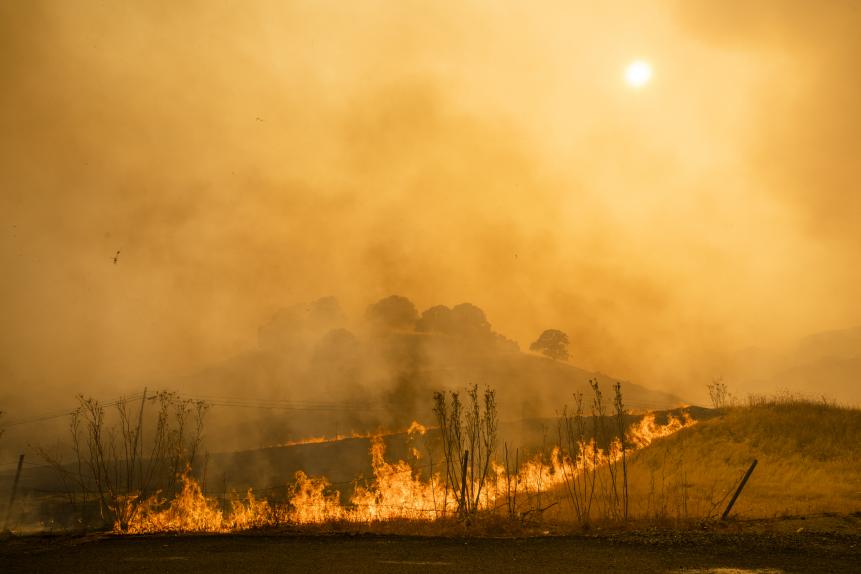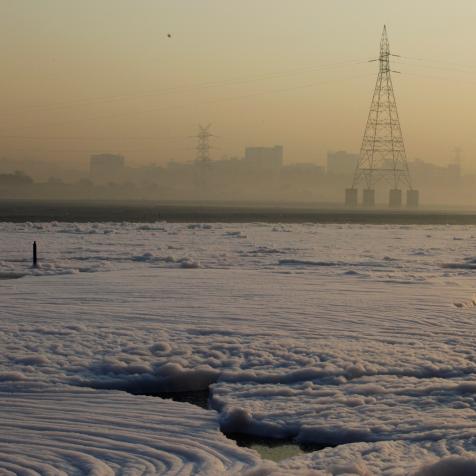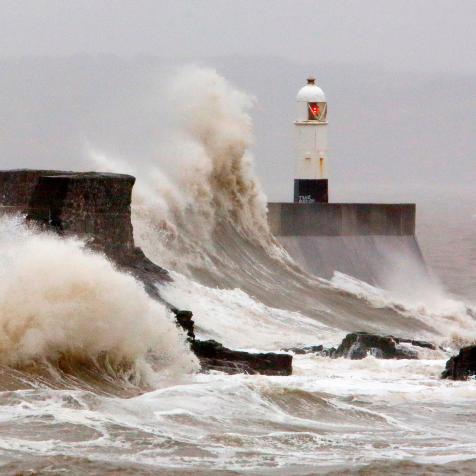
Alexandros Maragos
Cutting Methane is Quickest Way to Limit Global Warming Before 2030
President Joe Biden has announced plans to tackle climate change by reducing emissions of the greenhouse gas methane by at least 30% by 2030. His pledge, agreed with the European Union, aims to raise ambitions for world leaders to combat global warming ahead of the critical COP26 climate summit in November.
Methane is 84 times more potent at trapping heat than carbon dioxide in the short term, so reducing methane is the fastest way to limit global temperature rises. “This will not only rapidly reduce the rate of global warming, but it will also produce a very valuable side benefit like improving public health and agricultural output,” said Biden.
Urgency is needed to avoid the worst effects of climate change once world temperatures rise 1.5 Celsius above pre-industrial levels. Scientists warn of extreme droughts, floods, and wildfires, along with food shortages for hundreds of millions of people on a warmer planet. Earth is heating quicker than previously thought and methane from oil and gas production, agriculture and landfill waste must be scaled back.

Bloomberg Creative
Flames and smoke from wildfires in California.
Rising temperatures have brought the 1.5 C threshold “perilously close” said United Nations secretary general Antonio Guterres. Commenting on the IPCC’s August 2021 climate science report, Guterres called its evidence of rapid warming “a code red for humanity” requiring immediate action.
Methane accounts for around 10% of US greenhouse gas emissions from human activity. While globally, human activity produces between 50-65% of total methane emissions. Heat is trapped much more efficiently by methane, but it reacts with oxygen and is removed from the atmosphere in around 10 years, so drastically cutting methane can rapidly reduce human climate impacts.
Cutting human-caused methane emissions by 45% by 2030 would keep us below the 1.5 C threshold, according to a UN methane assessment. Projections show that it would prevent 255,000 premature deaths, 73 billion hours of lost labor due to extreme heat, and 26 million tons of crop losses globally.
Returning to ‘business as usual’ after the industrial lull brought on by COVID only stalled climate change, and the world is behind in its battle to cut emissions, said World Meteorological Office secretary general Petteri Taalas. “If we fail at climate mitigation, we would have a permanent problem for at least hundreds or even thousands of years,” said Taalas, leading to damage much more serious and long-lasting than the pandemic.

Peter Cade
In fact, methane emissions surged in 2020 by the largest amount since records began, along with an increase in carbon dioxide. Combating greenhouse gases at the source has become an urgent necessity. The UN says farming produces 40% of human-caused emissions. Alternative animal feeds to reduce methane from livestock, shifting towards plant-based diets and draining rice paddy fields will all help.
Waste industries could cut about 35% from their total of 20% of global emissions by reducing food and other organic waste sent to landfill, alongside better sewage treatment. But the largest and most cost-effective cuts are to be made in the fossil fuel (oil, gas and coal) industries, which produce 35% of global methane.
Scientists working for the National Oceanic and Atmospheric Administration discovered that US gas and oil methane emissions were 60% higher than estimated, mostly due to leaky pipelines and other infrastructure. There are more than 900,000 oil and natural gas wells in the US, but an investigation by Reuters news agency estimated the number of abandoned wells at more than 3.2 million.

Roberto Moiola / Sysaworld
Methane bubbles trapped in ice.
President Biden proposed an infrastructure package that would cap these wells and close abandoned coal mines, while creating hundreds of thousands of jobs. Senators have also introduced a methane fee law to fine polluters, a move that led to heavy lobbying by the fossil fuel industries against the measure.
But perhaps the largest cuts could be made if the oil and gas industry followed International Energy Agency (IEA) guidelines that include replacing pumps and motors, updating leak detection, and recycling waste methane rather than burning it off. The IEA estimates the industry’s methane emissions could be reduced by 75%. And the Clean Air Task Force (CATF) says it can mostly be done at little or no cost to industry.
“The science tells us we have vanishingly little time left to slow global warming before we permanently alter our environment,” said Sarah Smith, CATF program director. “The fastest way to pump the brakes is to reduce methane pollution, and the newly introduced global methane pledge is a welcome step toward doing just that.”


















